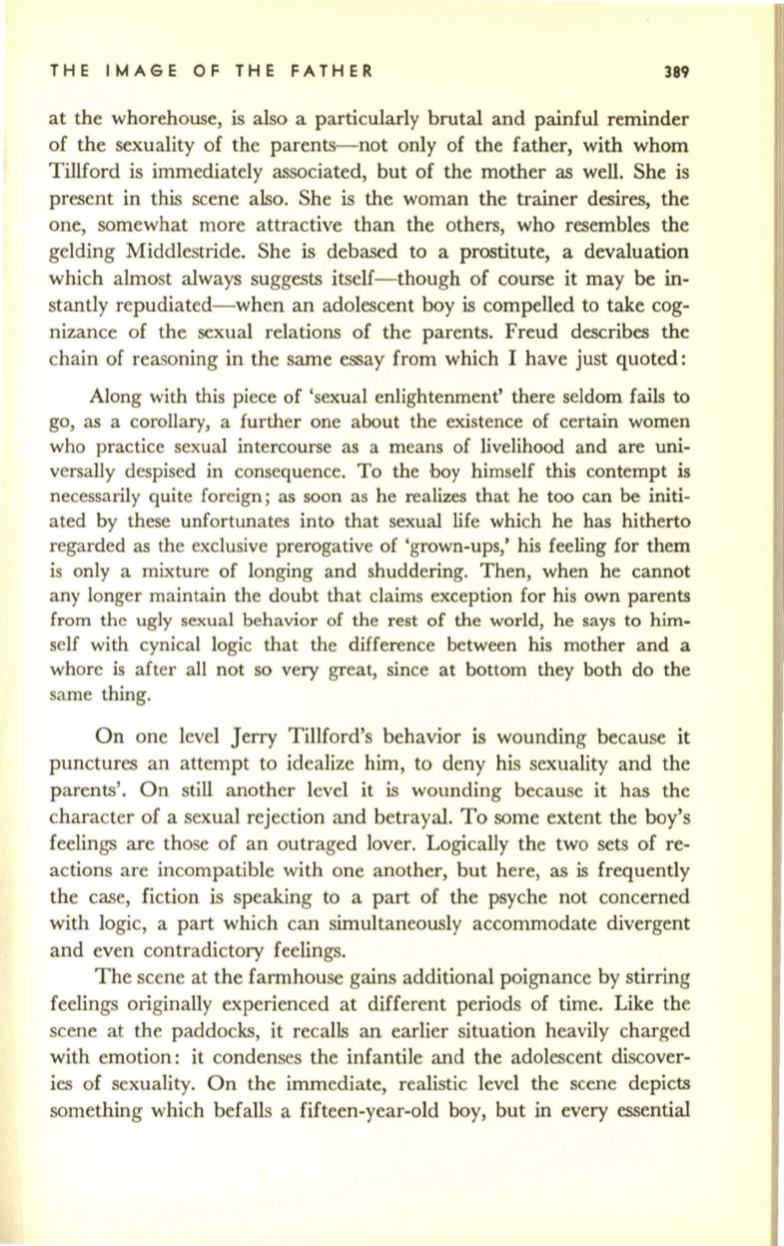
THE IMAGE OF THE FATHER
389
at the whorehouse, is also a particularly brutal and painful reminder
of the sexuality of the parents-not only of the father, with whom
Tillford is immediately associated, but of the mother as well. She is
present in this scene also. She is the woman the trainer desires, the
one, somewhat more attractive than the others, who resembles the
gelding Middlestride. She is debased to a prostitute, a devaluation
which almost always suggests itself-though of course it may be in–
stantly repudiated-when an adolescent boy is compelled to take cog–
nizance of the sexual relations of the parents. Freud describes the
chain of reasoning in the same essay from which I have just quoted:
Along with this piece of 'sexual enlightenment' there seldom fails to
go, as a corollary, a further one about the existence of certain women
who practice sexual intercourse as a means of livelihood and are uni–
versally despised in consequence. To the boy himself this contempt is
necessarily quite foreign; as soon as he realizes that he too can be initi–
ated by these unfortunates into that sexual life which he has hitherto
regarded as the exclusive prerogative of 'grown-ups,' his feeling for them
is only a mixture of longing and shuddering. Then, when he cannot
any longer maintain the doubt that claims exception for his own parents
from the ugly sexual behavior of the rest of the world, he says to him–
self with cynical logic that the difference between his mother and a
whore is after all not so very great, since at bottom they both do the
same thing.
On one level Jerry Tillford's behavior is wounding because it
punctures an attempt to idealize him, to deny his sexuality and the
parents'. On still another level it is wounding because it has the
character of a sexual rejection and betrayal. To some extent the boy's
feelings are those of an outraged lover. Logically the two sets of re–
actions are incompatible with one another, but here, as is frequently
the case, fiction is speaking to a part of the psyche not concerned
with logic, a part which can simultaneously accommodate divergent
and even contradictory feelings.
The scene at the farmhouse gains additional poignance by stirring
feelings originally experienced at different periods of time. Like the
scene at the paddocks, it recalls an earlier situation heavily charged
with emotion: it condenses the infantile and the adolescent discover–
ies of sexuality. On the immediate, realistic level the scene depicts
something which befalls a fifteen-year-old boy, but in every essential


